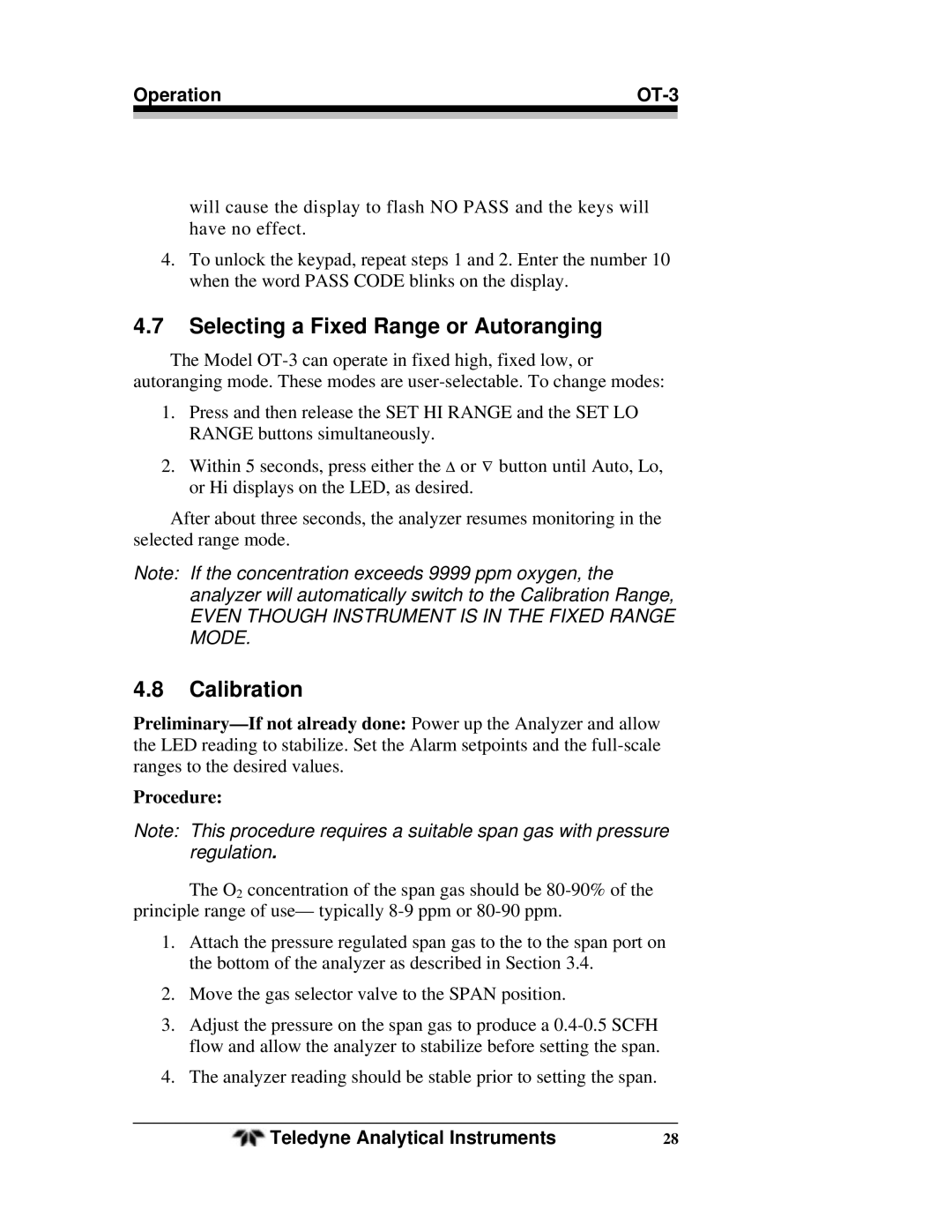Operation | |
|
|
will cause the display to flash NO PASS and the keys will have no effect.
4.To unlock the keypad, repeat steps 1 and 2. Enter the number 10 when the word PASS CODE blinks on the display.
4.7Selecting a Fixed Range or Autoranging
The Model
1.Press and then release the SET HI RANGE and the SET LO RANGE buttons simultaneously.
2.Within 5 seconds, press either the D or Ñ button until Auto, Lo, or Hi displays on the LED, as desired.
After about three seconds, the analyzer resumes monitoring in the selected range mode.
Note: If the concentration exceeds 9999 ppm oxygen, the analyzer will automatically switch to the Calibration Range,
EVEN THOUGH INSTRUMENT IS IN THE FIXED RANGE MODE.
4.8Calibration
Procedure:
Note: This procedure requires a suitable span gas with pressure regulation.
The O2 concentration of the span gas should be
1.Attach the pressure regulated span gas to the to the span port on the bottom of the analyzer as described in Section 3.4.
2.Move the gas selector valve to the SPAN position.
3.Adjust the pressure on the span gas to produce a
4.The analyzer reading should be stable prior to setting the span.
Teledyne Analytical Instruments | 28 |
